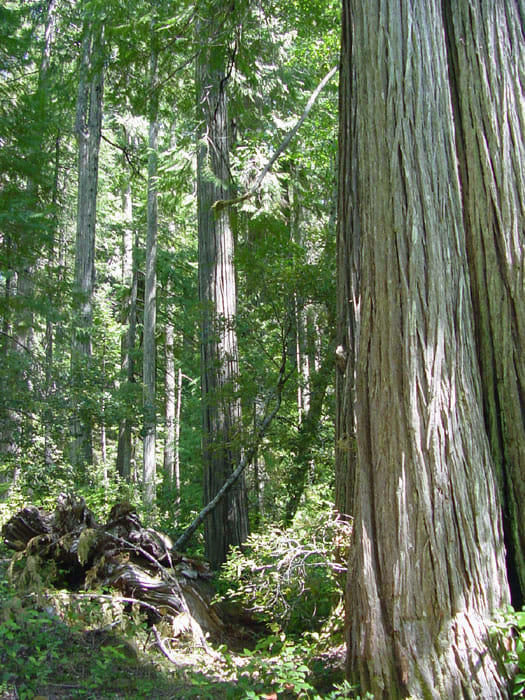Lawson cypress, Port Orford cedar, Oregon cedar, Ginger pine
Chamaecyparis lawsoniana

🌿 Morphology
🌞 Growing conditions
🌍 Origin and family
🌾 Uses
Warning: Despite the care taken in writing this sheet, it is essential to cross-reference sources before using or consuming any plant. When in doubt, consult a qualified professional
Permaculture uses
Lawson cypress is primarily used for hedging, windbreaks, and ornamental purposes in permaculture systems. While not typically used for food, the foliage can be used in small amounts to make a fragrant tea. The wood is valuable and durable, used for shingles, flooring, and construction. It can provide shelter and habitat for wildlife. Specific cultivars offer varied growth habits, colors, and sizes for diverse landscape integration.
Permapeople description
Lawson's Cypress is a species of conifer in the genus Chamaecyparis, family Cupressaceae.
Botanical description
Chamaecyparis lawsoniana is an evergreen coniferous tree in the cypress family Cupressaceae, native to southwestern Oregon and northwestern California. It typically grows to 200-230 feet tall, exceptionally to 260 feet, with trunk diameters up to 13–20 feet. The bark is reddish-brown, fibrous, and peels off in strips. The leaves are scale-like, arranged in flattened sprays, and are dark green to blue-green. The seed cones are globose, 0.3–0.5 inches in diameter, with 6–10 scales, maturing in autumn about 7–8 months after pollination. It is noted for its graceful, drooping branchlets and conical shape. Many cultivars exist, differing greatly in size, color, and form.
Companion planting
Lawson cypress generally grows well with other acid-loving plants. Avoid planting it in areas with poor drainage. Due to its susceptibility to Phytophthora root rot, good soil drainage and air circulation are crucial. Consider companion planting with disease-resistant species. Avoid planting near walnut trees as they can be allelopathic.
Propagation methods
Propagation is typically done through seeds or cuttings. Seed propagation requires stratification for improved germination. Cuttings of semi-ripe wood taken in late summer or autumn can be rooted under mist. Grafting is sometimes used to propagate specific cultivars.
History and traditions
Native American tribes of the Pacific Northwest traditionally used Port Orford cedar for its rot-resistant wood in building canoes, houses, and other structures. The wood was also used for ceremonial purposes. Introduced to Europe in the mid-19th century, it quickly gained popularity as an ornamental tree. Its fragrant wood and attractive appearance have made it a favored choice for landscape design worldwide.
Usage calendar
Seed collection occurs in autumn (September-October). Cuttings are best taken in late summer or autumn. Planting can be done in spring or autumn. Pruning, if needed, is best done in late winter or early spring. Flowering occurs in spring (April-May).
